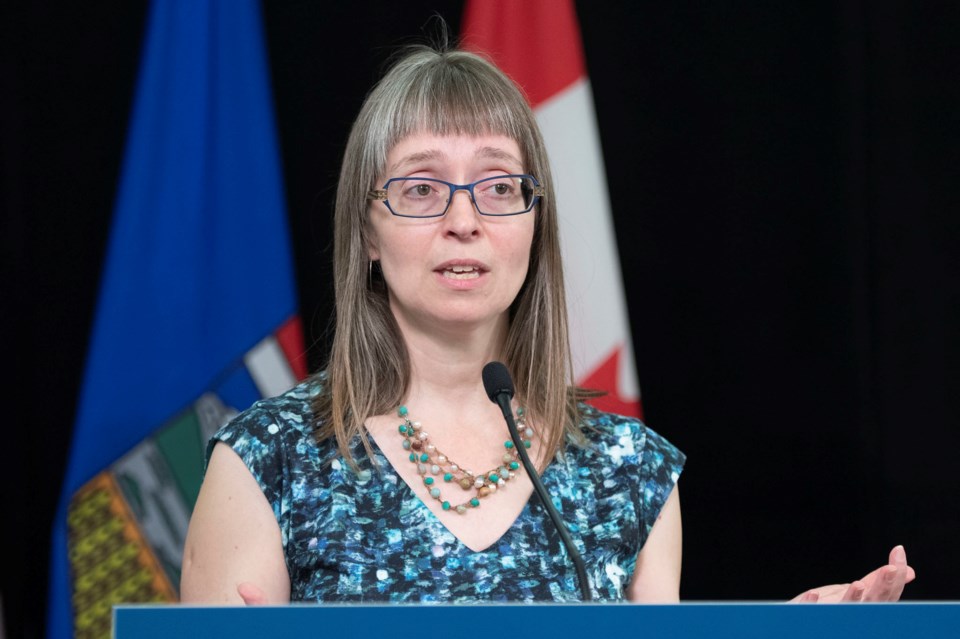The province is set to more than double its COVID-19 testing capacity with an investment of $4.5 million in new virus detecting equipment and technology.
The increased testing capacity will be critical in Alberta’s ability to trace COVID-19 cases and aid in the relaunch of the provincial economy said Minister of Health Tyler Shandro at a press conference on Tuesday (May 5).
“Testing is a critical element of our provinces response to COVID-19 and it's essential to our provinces relaunch strategy,” Shandro said. “Our decisions about reopening businesses and resuming activities require us to have the most accurate and detailed information possible.”
The funding includes a $1.7-million donation from the Calgary Health Trust with the remaining funds covered by Alberta Health Services and the Government of Alberta.
The equipment will increase COVID-19 testing in the province from 7,000 tests per day to 16,000 by June, Shandro said.
The new supplies will be integrated into existing testing systems in the province and be placed around Alberta at sites where they are needed most.
“This is going to ease the strain on the Edmonton and Calgary labs while getting fast results for communities across Alberta,” Shandro said.
The data provided by testing will help guide the easing of public health restrictions in the province during the three stages of the Alberta Relaunch Strategy. The information gathered will allow Public Health to quickly analyze the impact of public health measures during the relaunch and adjust restrictions as needed, Shandro said. He added that testing also aids in understanding how the virus is spreading in the province.
Shandro noted that additional health care practitioners can now aid in contact tracing.
Chiropractors, paramedics, respiratory therapists, psychiatric nurses, dental hygienists, physiotherapists, pharmacists and licensed practical nurses will now be able to help with contact tracing after completing training. Alberta Health Services will continue to supervise the contact tracing process to ensure it remains efficient and effective, Shandro said.
Alberta Chief Medical Officer of Health Dr. Deena Hinshaw said aggressive and widespread testing has been a cornerstone in the provincial strategy to help flatten the curve of COVID-19 infections.
She encouraged any Albertan with symptoms of the virus, including cough, fever, runny nose, fever and shortness of breath, to arrange for testing to help the province track and manage the spread of new cases.
The announcement of increased testing in the province comes on the same day recovered COVID-19 cases accounted for more than half of recorded cases in Alberta.
Hinshaw reported that there have been 57 new cases of COVID-19 identified in Alberta bringing the provincial total to 5,893 cases.
Of these cases, 3,219 people have recovered.
Hinshaw said there have been two additional COVID-19 related deaths bringing the total in Alberta to 106.
The province is preparing for a potential second wave of the virus, Hinshaw said, explaining that they are ensuring they have robust testing and contact tracing abilities in place. At the same time, they are working to ensure the public health measures in place are being continually assessed to determine what additional steps need to be taken.
Hinshaw noted that Albertans can help prevent a second wave of the virus by continuing to follow public health protocols. She added basic practices such as social distancing, good hygiene and staying home when feeling ill will continue to play an important in preventing a steep rise of virus infections for the foreseeable future.
“It’s really our actions that will determine whether or not we see a spike in cases,” Hinshaw said. “As we move into our cautious relaunching we are looking at sort of a staged approach with careful monitoring— Our goal will be to make sure that our activities are such that we can retain a level or decreasing amount of virus spread in the population.”



